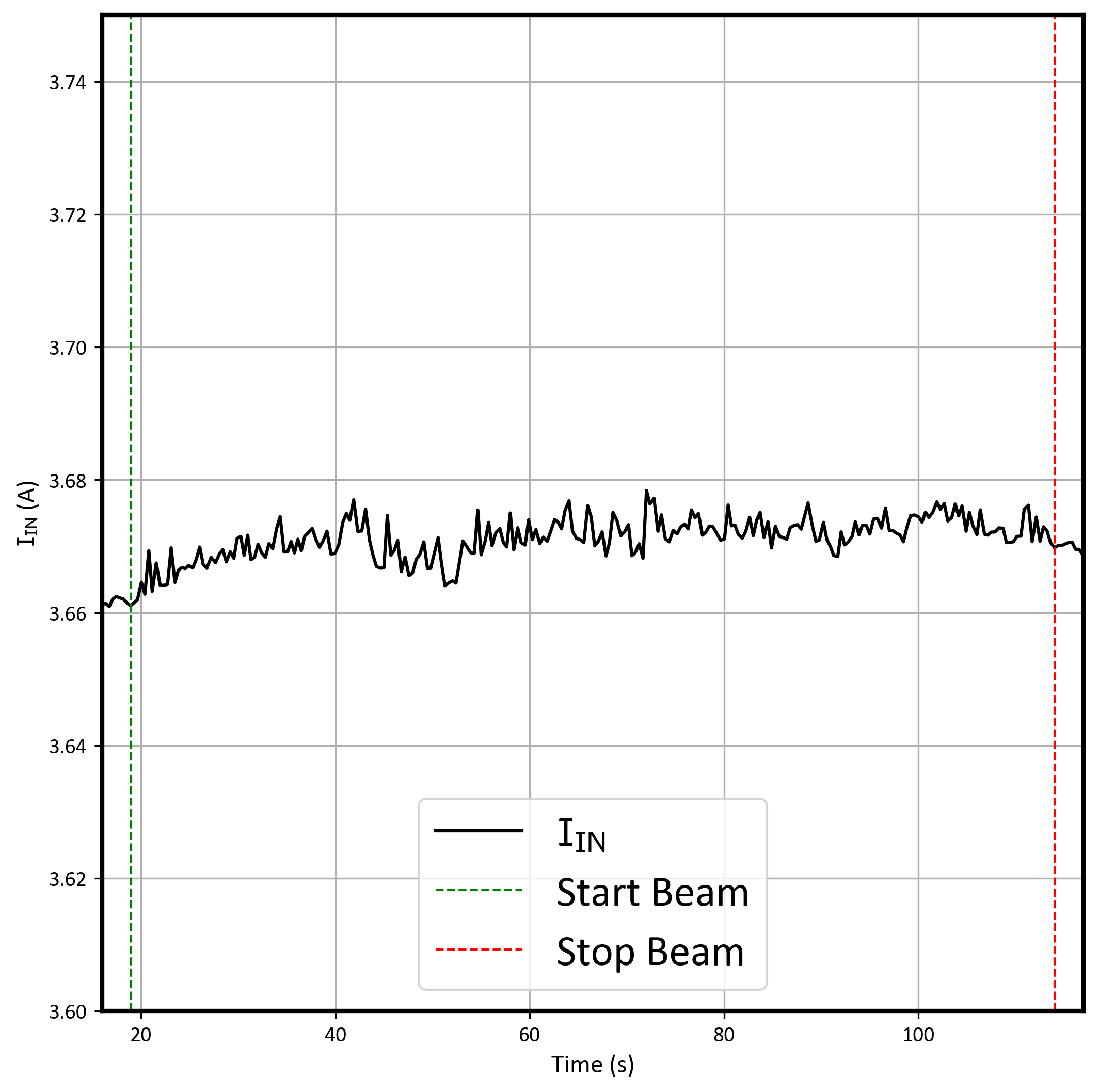SLVK086A january 2022 – may 2023 TPS7H4003-SEP
PRODUCTION DATA
- 1
- Single-Event Effects Test Report of the TPS7H4003-SEP Synchronous Step-Down Converter
- Trademarks
- 1 Introduction
- 2 Single-Event Effects (SEE)
- 3 Device and Test Board Information
- 4 Irradiation Facility and Setup
- 5 Depth, Range, and LETEFF Calculation
- 6 Test Setup and Procedures
- 7 Destructive Single-Event Effects (DSEE)
- 8 Single-Event Transients (SET)
- 9 Event Rate Calculations
- 10Summary
- A Appendix: Total Ionizing Dose From SEE Experiments
- B Appendix: References
- C Revision History
7.1 Single-Event Latch-up (SEL) Results
During SEL characterization, the device was heated using forced hot air, maintaining the DUT temperature at 125°C. The die temperature was monitored during the testing using a T-Type thermocouple attached to the thermal pad vias (on the bottom side of the EVM) with thermal paste. The thermocouple was held in-place by using high temperature tape (kapton-tape). Die-to-thermocouple temperature was verified using a IR-camera.
The species used for the SEL testing was a silver (109Ag) ion with an angle-of-incidence of 0° for an LETEFF = 48.2 MeV·cm2/mg (for more details refer to Section 5). The kinetic energy in the vacuum for this ion is 1.634 GeV (15-MeV/amu line). Flux of approximately 105 ions/cm2·s and a fluence of approximately 107 ions/cm2 were used for the five runs. Run duration to achieve this fluence was approximately 2 minutes. The three devices were powered up and exposed to the heavy-ions using 6.5 V and the maximum recommended voltage of 7 V and maximum load of 18 A. No SEL events were observed during all four runs, indicating that the TPS7H4003-SEP is SEL-free.Table 8-3 shows the SEL test conditions and results. Figure 7-2 shows a plot of the current vs time for run # 1.
| RUN # | UNIT # | ION | LETEFF (MeV·cm2/mg) |
FLUX (ions·cm2/mg) |
FLUENCE (# ions) |
VIN (V) |
|---|---|---|---|---|---|---|
| 1 | 1 | 109Ag | 48.2 | 9.79 × 104 | 1 × 107 |
6.5 |
| 2 |
1 |
109Ag | 48.2 | 7.06 × 104 | 9.96 × 107 |
7 |
| 3 |
2 |
109Ag | 48.2 | 8.56 × 104 | 1 × 107 |
6.5 |
| 4 |
2 |
109Ag | 48.2 | 1.1 × 105 | 1 × 107 |
7 |
|
5 |
3 |
109Ag | 48.2 |
1.16 × 105 |
9.96 × 106 |
7 |
σSEL ≤ 7.38 × 10–8 cm2/device for LETEFF = 48.2 MeV·cm2/mg and T = 125°C.
 Figure 7-1 Current vs Time for Run # 1 of
the TPS7H4003-SEP at T = 125°C
Figure 7-1 Current vs Time for Run # 1 of
the TPS7H4003-SEP at T = 125°C